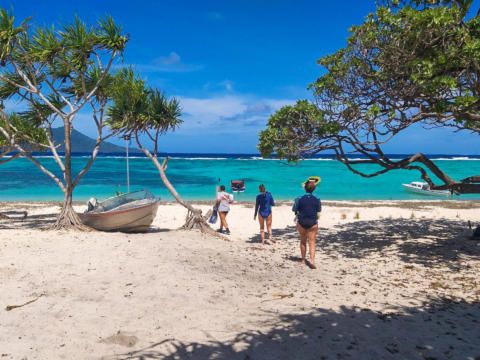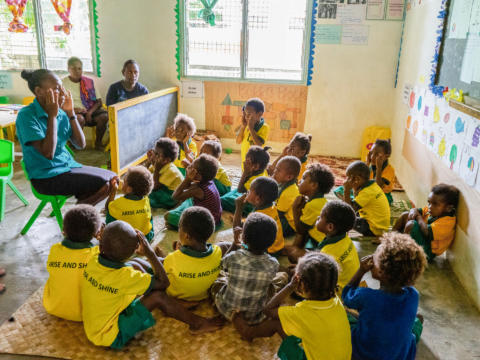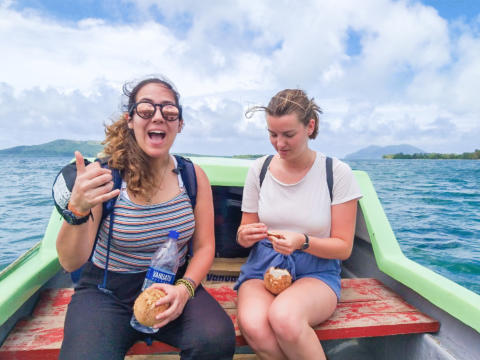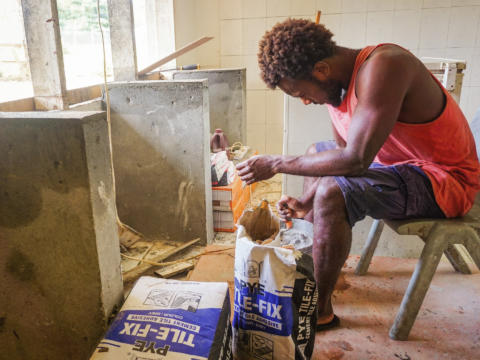Only 780€ per week!
Marine Conservation
Pele Island - Vanuatu
Marine Conservation
Pele Island - Vanuatu
Support conserving the sea life in Vanuatu by taking part in our Marine Conservation program where you will be able to spend some quality time by the beach!
Throughout your time under this project, you will be supporting the supervisors to correctly place the materials and complete planting a coral reef to protect sea life. Your time at the project will not only benefit conserving marine life but also give you one of the most memorable experiences in your life.
Program Description
If you are a person craving to dive and snorkel in the beautiful waters of Vanuatu, this would be the ideal project for you. By joining the project, you will not only be able to satisfy your craving for diving and snorkelling but also you will be able to give back to this beautiful country. Throughout the project period, you will be assisting our experts to plant a coral reef by transporting grids to preselected sites and positioning them correctly on the ocean floor and collect other natural materials on the mainland and Pele Island to be placed on the grids for coral planting. Since you will be diving in shallow waters, a diving certificate is not compulsory. However, the proper diving experience would be an additional benefit as it may be useful for specific tasks.
Aims & Objectives
To support sustainable development in Vanuatu by making efforts for marine conservation.
Schedule
Monday to Friday
- Collecting materials from the mainland and transporting them to the required location in the ocean
- Transporting grids to the preselected sites
- Placing grids correctly on the ocean floor
- Engaging in any other related task as advised by the supervisors
Note: This schedule can be changed and/or amended depending on weather conditions, local conditions and unforeseen circumstances.
Participant Criteria & Requirements
Standard Requirements
Minimum age: –
Maximum age: –
Minimum English level: Basic
CRB required: On Signup
Passport copy required: No
Resume copy required: No
Required qualification: None
Additional Requirements
There are no further requirements for this program.
Additional Equipment
No specific equipment required for this project.
Location
Pélé Island, sometimes spelled Pele in English, is a volcanic island located 11,2 miles north of the island of Éfaté in the Shefa Province of the Republic of Vanuatu. It has a total area of 1.7 square miles, Pélé is inhabited by about 200-220 Ni-Vanuatu villagers residing in the four villages: Worsiviu, Worearu, Piliura, and Launamoa. Pélé Island is a part of the MPA Nguna-Pele Marine Protected Area, which was established in 2003, and is a popular Vanuatuan diving location. The Nguna-Pele Marine Protected Area covers a total area of 11.5 sq. mi., including numerous reefs, seagrass beds, mangrove forests and intertidal lagoons. The Nguna-Pele Marine Protection Agency is located in the village of Piliura, and mounts an exhibition and sells T-shirts. Income from tourism is distributed by the Village Tourism Committee and supports aims as village water supply projects.
The island can be visited daily by boat from the Paonangisu area by the town of Emua on Éfaté's north coast. There are also yachts available both from Emua and Nguna for day and overnight charters to the island. The island is nearly adjacent to the island of Nguna, with a small passage no deeper than 33 yards separating the two. It has a tropical climate and has a maximum elevation of 650 feet at its highest. Much of the island is extremely steep and rocks prevent you from walking along the coastline around the island. White sandy beaches are found in Piliura, Worearu, Laonamoa, and Sake. Overpopulation has led to a steady migration from Pele villages to southern Nguna in recent times.
About the Accommodation
A beautiful villa located very close to the beach. A home away from home.
Food Arrangements
You will be served with authentic cuisine which consists mainly of Chicken dishes, and dishes such as cheese curry served in coconut milk. Coconut curry, dhal (lentils), fish curry, saffron rice, fresh tropical fruits, and ladob is eaten either as a savory dish or as a dessert.
Facilities
ATMs: There are ATM's around our centers. The closest one to our residence is about a 15 minute walk from the house.
Shop: The closest local supermarket is a 10 minute walk from the centre.
Activities & Events
No scheduled activities outside the program.
Sights & Surroundings
There are many sights and surroundings which you can explore during your time in Pele.
Transportation
From this location we do not provide free transport to other locations.
Quick Facts
Name: The Republic of Vanuatu
Population: approx. 286,429
Capital: Port Vila
Language: Bislama
Currency: Vanuatu Vatu (VUV)
Time zone: VUT (UTC +11)
Country Information
Vanuatu consists of 83 islands located about 800 kms west of Fiji and 2,250kms northeast of Sydney. Until the explorers and missionaries arrived around the 15th century, Vanuatu had been home to Melanesians for over 3,500 years. It now has a Westminster parliamentary style of democracy since its independence on 30th July 1980, after more than 70 years of rule by Great Britain and France. Its original name given by Capt James Cook in 1774 was New Hebrides and the legal system is based on British law. The population is 95% indigenous “Ni-Vanuatu” of Melanesian descent.
Vanuatu for many years already has been a financial centre, without any personal or corporate taxes nor any tax treaties with foreign countries. On all goods and services a Value Added Tax (VAT) is charged at 12.5%.There are exports of copra, manganese, hardwood and beef, whilst Tanna Island is famous for its excellent coffee grown there.
Climate
Vanuatu has a tropical climate in most areas with subtropical conditions at some of the most
southern islands.Average temperatures range from 25°C in winter to 29°C in summer; please note the seasons are directly opposite to those in the Northern hemisphere, and Dec – March is also the cyclone season with hot and rainy conditions throughout.
Culture
The culture of Vanuatu has been mainly influenced due to colonization by the British and the French. Even though the national language of Vanuatu is Bislama, due to the impact of colonization both English and French languages are also considered as official languages.
In terms of religion, Christianity is still the major religion in Vanuatu and the majority of the Christians adhere to the Presbyterian church in Vanuatu. The culture of Vanuatu is also diverse across different regions and particularly in the central region, Melanesian values also dominate.
Transportation
By Plane
There are international scheduled flights between Port Vila and Fiji, Australia, New Zealand, Papua New Guinea, New Caledonia and the Solomon Islands.
Domestic flights also from the Bauerfield Airport are between Vila and the main islands including Espiritu Santo, Tanna, Pentecost, Malekula and Ambrym.
By Bus
Unfortunately there is no regular public transport system in Vanuatu. Instead there are many mini buses (usually pick-up trucks or vans) especially in Port Vila and Luganville. They are privately owned and can be identified by a red letter "B" which is attached to the number plates. As there are no fixed routes they are simply flagged down on the side of the road, and the driver will determine whether or not your destination is on his route. First passengers are dropped off first. Especially on the other islands you may need to check at the market sites and make arrangements with available trucks marked with a red “T”.
By Taxi
Should you plan day trips, taxis may be a more convenient alternative, though less economical than buses. Always make sure to negotiate the price prior to the journey. This applies mostly to Port Vila where the tourists from large cruise ships will want to see and do things within their few hours of time on land.
By Boat
Inter-island transportation and cargo movement relies heavily on ferry vessels of different types and sizes. The conditions of most vessels are not of international standard in terms of accommodation and safety.





